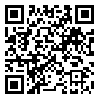BibTeX | RIS | EndNote | Medlars | ProCite | Reference Manager | RefWorks
Send citation to:
URL: http://sjh.umsha.ac.ir/article-1-1109-en.html

 , Akram Ansar
, Akram Ansar 
 , Amaneh Yazdanfar
, Amaneh Yazdanfar 
 , Eskandar Omidinia
, Eskandar Omidinia 
 , Mahmoud Sadjjadi
, Mahmoud Sadjjadi 
 , Abbas Zamanian
, Abbas Zamanian 

In order to determine the extent and causative agents of dermatophytoses in the Hamadan region of west Iran; a study was made during a 9 month period from October 1991 to June 1992. A total of 7495 individuals were studied of whom 681 (9%) were suspected of having cutaneous mycoses.
Among them dermatophytoses were the commonest infection (259/681=38%). Of 256 individuals infected with dermatophytes, tinea capitis were observed in 163 (62.9%); t. corporis in 27 (10.4%); t. manum and t. cruris in 19 (7.3%) each; t. barbae and faciei in 14 (5.3%); t. Pedis in 13 (5%) and t. unguium in 4 (1.5%). A total of 144 patients yielded dermatophyte cultures. The frequency of the isolated species in decreasing order was as follows: Trichophyton Verrucosum, 78 (5.1%); T. schoenleinii, 48 (33.3%); Microsporum canis, 8 (5.5%); Epidermophyton floccosum, 5 (3.5%); T. mentagrophytes and M. gypseum 2(1.4%) each; T. tonsurance, 1(0.7%). In cnclusion, the most prevalent dermatophytosis in this region was t. captitis with the infecting agent of T. schoenleinii.
| Rights and permissions | |
 |
This work is licensed under a Creative Commons Attribution-NonCommercial 4.0 International License. |



